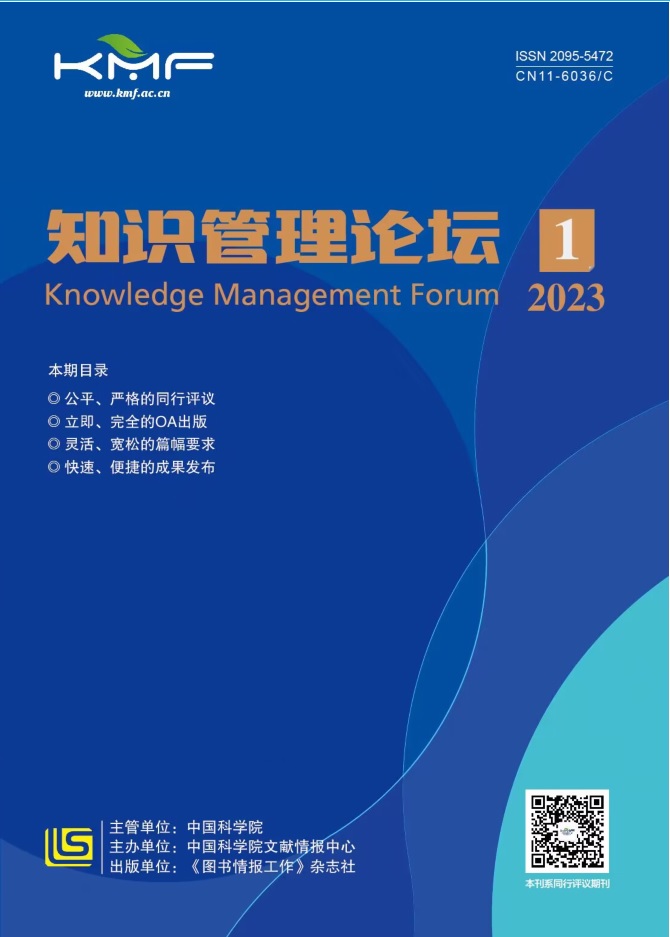 PDF(1069 KB)
PDF(1069 KB)


 PDF(1069 KB)
PDF(1069 KB)
 PDF(1069 KB)
PDF(1069 KB)
基于知识化的新时代人力资源管理
Knowledge-Based Human Resource Management in the New Era
[目的/意义] 新时代具有鲜明的知识化特征。企业创新作为高质量发展的基石,面对新时代人力资源管理的机遇与挑战,就企业研发创新和管理创新,从企业全方位创新角度分析硬知识与软知识及其作用,构建企业创新者和创新成果宝塔结构。[方法/过程] 就“研究、设计开发、加工制造”企业研发全过程,从软知识角度分析一线员工创新潜能,以及一线员工软知识价值、作用与贡献,进而提出知识化的人力资源管理构架。[结果/结论] 本研究服务于企业创新的知识化水平提升,做实做强做稳创新宝塔结构的塔底,破解与缓解一线悖论,实现企业研发最后一公里落地的高质量发展。
[Purpose/Significance] The new era shows distinctive knowledge-based features. Enterprise innovation is the cornerstone of high-quality development, this paper aims to analyze the opportunities and challenges of human resource management in the new era, analyze hard and soft knowledge and their roles in terms of enterprise’s R&D and management innovation from the perspective of all-around innovation, and build a pagoda structure of enterprise innovators and innovation results. [Method/Process] Concerning the whole process of R&D in the enterprise of "research, design and development, processing and manufacturing", the innovation potential of front-line employees and their value, role, and contribution were analyzed from the perspective of soft knowledge, and then a knowledge-based human resource management structure was proposed. [Result/Conclusion] This study serves to enhance the knowledge-based level of enterprise innovation, make the foundation of the innovation pagoda structure stronger and more stable, solve and alleviate the front-line paradox, and realize the high-quality development of the last kilometer of enterprise research and development.

知识化 / 企业创新 / 硬知识 / 软知识 / 人力资源管理
knowledge-based / enterprise innovation / hard knowledge / soft knowledge / human resource management
| [1] |
哈耶克.个人主义与经济秩序[M]. 邓正来,译.上海: 复旦大学出版社,2012.
|
| [2] |
勒庞.乌合之众[M].黄强,译.杭州:浙江文艺出版社,2018.
|
| [3] |
张维迎.重新理解企业家精神[M].海口:海南出版社,2022.
|
| [4] |
葛新权.论经济学研究中的分析思维及其逻辑维度[EB/OL].[2022-03-10]. http://www.cssn.cn/jjx/jjx_xzyc/202203/t20220310_5397944.shtml.
|
| [5] |
陈劲.以“知识管理”赢得现代管理的新发展[EB/OL].[2022-06-28].https://mp.weixin.qq.com/s?__biz=MjM5NTA3NzU3Mg==&mid=2653139684&idx=3&sn=8b3373c82a149a89efcd0f7ccdb5c42f&chksm=bd291e4f8a5e9759bacf91f9aaa0c450d7899215a9018eaf3c86714954474645ed14a9eb5b23&scene=27.
|
| [6] |
葛新权.平等管理及其在企业管理中的应用[N].中国社会科学报,2011-03-10(12).
|
| [7] |
葛新权.唱响制度与文化创新主旋律[EB/OL].[2022-07-25].http://www.gscass.cc/show-73-2600-1.html
|
| [8] |
葛新权.现代化经济体系建设中的绿色考量[EB/OL].[2022-10-01].http://econ.cssn.cn/jjx/xk/jjx_lljjx/jjx_hgjjx/201803/t20180301_3863724_1.shtml.
|
| [9] |
葛新权.基于知识管理的广义营商环境建设与保障[J].知识管理论坛,2021,6(3):127-133.
|
| [10] |
刘益东.打造以一流人才为中心的卓越科研体系——关于设立基础研究特区的建议与思考[J].国家治理, 2022(3):29-34.
|
| [11] |
张丽俊.组织的力量:增长的隐性曲线[M].北京:机械工业出版社,2022.
|
| [12] |
年勇.忽悠新概念要付出代价 制造业三方面亟待提升[EB/OL].[2020-09-21].https://baijiahao.baidu.com/s?id=1678397620285257470&wfr=spider&for=pc.
|
/
| 〈 |
|
〉 |